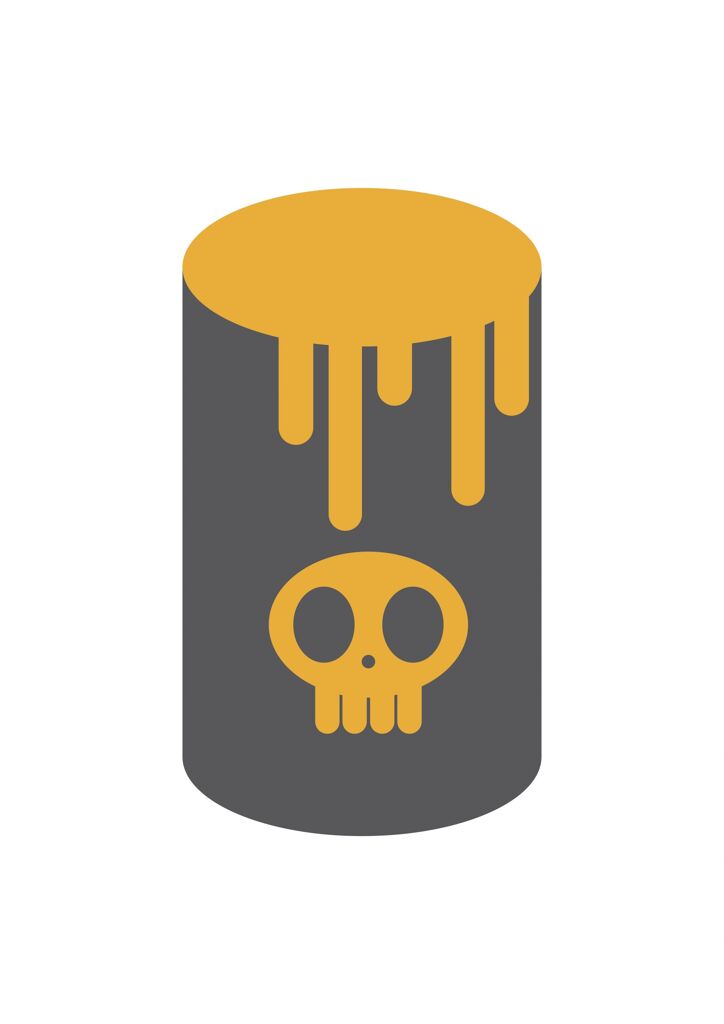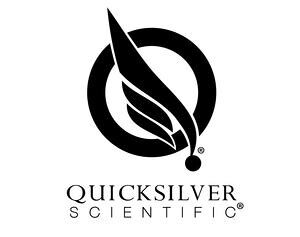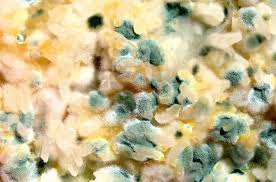Identifying Common Toxins

In our previous articles, we talked about various toxin classifications. The first article in the series covered biological and chemical substances that could cause harm to human cells and tissues. We discussed further subclasses of these two at length. The second article is on environmental and radiation poisoning. The article explored the various sources of environmental contamination and pollution and their suggested remedies. In the second article, we examined the sources of radiation poisoning, symptoms, and how to manage contact with radiation. Today’s article serves as a recap to what we covered in the previous posts, identifying common toxins you are likely to encounter and suggesting ways to minimize and manage poisoning.
While there exists a wide range of substances harmful to your body, you are more likely to encounter some. These substances include water contaminants, heavy metals and foods listed among the ‘Dirty Dozen’. This post aims to arm you with knowledge on sources and remedies to toxic food ingredients, metals in the environment, and substances present within our residences and in the water we use. This should widen your view on food safety, environmental conservation and detoxification. Once you learn what’s inside your food and surroundings, you could take the right steps toward a fulfilling life rid of toxins.
The ‘Dirty Dozen’
The Environmental Working Group (EWG) usually lists 12 fruits and vegetables with the most pesticide residues. Pesticides are to blame for a host of health problems, including; brain toxicity, cancer and hormone imbalance. Diet experts advocate for a switch toward organic foods for this reason (Johansen & Bruce, 2003). Check the EWG Dirty Dozen List to find the key foods to avoid due to highest residue of pesticides / herbicides / fungicides.
While a shift away from non-organic foods is highly advised, in particular the dirty dozen are the most important to focus on first.
The Environmental Working Group also offers a list of non-organic foods that contain the least pesticide contamination. This gives room for a gradual shift toward an organic diet by choosing non-organic from this list only. Click to find out this year’s list (in order of least contamination).
To reduce amounts of harmful chemicals ingested alongside your fruits and vegetables, you are urged to carefully plan your meals, incorporate home gardening and organic methods of food preservation.
Metals and Toxins in your water
Heavy metals are relatively dense metals known for their potential toxicity to the environment. Four particular metals have made it to the World Health Organization (WHO) top 10 chemicals of major public concern. Human activities have raised their concentration, and they find their way to living tissues through inhalation, diet and physical contact. Some of these metals could be toxic in large quantities but essential to humans in small doses (Babel, et al, 2003).
The quality of water we consume has been somewhat of a hot topic lately. Residents of Flint, Michigan have experienced toxic health problems resulting from lead contamination. Water problems have been a problem since time immemorial, but have only recently started to get a piece of the limelight (Cunliffe, et al, 1999). The current water issues are a result of industrial waste, leeching off of pesticides and faulty storage coupled with lousy government policies. Let us explore some of the poisons that may be oozing through your taps.
- Fluoride
Source: Was introduced to water in the mid-twentieth century to help reduce tooth decay.
Effects: A disrupts the nervous and endocrine system. Can damage the thyroid gland and harden the pineal gland.
- Chlorine
Source: Normally added to water to purify it. Chlorine has found various uses due to its disinfectant properties, including bleaching products, cleaning swimming pools and sanitizing sewage and industrial waste.
Effects: reacts with water to form hydrochloric acid. This acid could cause respiratory problems, cell damage, memory loss and balance impairments.
- Lead
Source: Corroding of water pipes.
Effects: developmental issues, hearing impairment, behavioral problems, stunted growth, learning disability and brain damage. Lead affects every tissue in our body. Lead is also to blame for reproductive problems, autism and various forms of cancer.
Remedies to water contamination
- Use of reverse osmosis, ion exchange columns and activated alumina to get rid of fluorine in water.
- Use of other alternatives to chlorine, such as ozonation, UV radiation, Ionizing radiation and home filtration. One effective home filter is the MultiPure water filter, by Deanne Delong (Once you have contacted her, you could mention Diane Mueller as your reference!).
- Flush your water system regularly to get rid of the contaminants.
- Identify sources of lead poisoning in your drainage system and eliminate where necessary.
In the list below, we cover some common toxic heavy metals.
- Arsenic:
Sources: commercial poultry & chicken feed, contaminated beer, wood preservatives, manufacture of glass and mirrors, paint, tobacco smoke, cosmetics and contaminated soil.
Health effects: nausea, diarrhea, arrhythmia, neuropathy, diabetes, hypopigmentation and in some cases cancer.
- Mercury
Sources: Mercury vapor from mining and industrial practices, bioaccumulated Methyl mercury from predatory, fish species such as tuna, swordfish, mackerel, shark and whales, elemental mercury (quicksilver) and inorganic mercury compounds.
Health effects: painful neuropathy (itching and burning sensation on the skin), skin discoloration, nerve damage, brain damage, visual impairment, impaired of motor functions, headache, muscle atrophy, memory loss and cognitive disability.
Remedy and prevention: we could prevent mercury poisoning by reducing exposure to mercury compounds. This can be achieved by minimizing mercury in the diet, careful cleanup of spilled mercury, and observing set standards of mercury and mercury compounds as set by regulating agencies.
Mercury poisoning is treated by decontamination immediately after exposure, chelation therapy (using either DMSA, 2, 3-dimercapto-1-propanesulfonic acid [DMPS], D-penicillamine [DPCN], or dimercaprol [BAL]).
To Read About Blog Topic, Scroll Down
Want To Work With Our Clinic?
Do you have a chronic or mystery illness that no one has been able to help you with? Are you simply wanting to re-connect with a healthier version of yourself? It’s Time To Finally Feel Better!
- Chromium
Sources: the water-soluble Chromium (IV) is known for its toxic and carcinogenic properties. Limited amounts of Chromium (III) can enter the cells, where it is known to cause cell damage. Coal and oil combustion emissions, leather tanning, textile pigmentation and electroplating techniques also release chromium. Chromium waste slag introduces Chromium compounds to the soil.
Health Effects: Respiratory conditions such as asthma, bronchitis & rhinitis, skin conditions such as erythema, swellings, scaling and fissuring. Chromium poisoning also affects the liver, the gastrointestinal tract, the cardiovascular system and is a carcinogen.
Management: There exists no proven cure for Chromium poisoning. Treatment of exposure is usually supportive, depending on the symptoms. It is important to maintain the proper fluid and electrolyte balance. Supportive measures for the symptoms include; cardiovascular support, monitoring of liver & kidney function and ventilator support.
- Cadmium
Sources: Cadmium used in the manufacture of batteries, cigarette smoke, hazardous waste removal/scraping of cadmium paints, electroplating process and agricultural products such as fertilizer.
Health effects: Cadmium is an extremely toxic element, classified as a group 1 carcinogen. It is also known to cause flu-like symptoms such as fever, muscle ache and chills resulting in bronchitis, pneumonitis and edema. Inhaling cadmium dust results in renal and respiratory complications, liver damage, bone damage and anosmia.
Intervention: There is no specific antidote for acute cadmium poisoning. Prevention of further exposure is the most important step in management of patients with symptoms suggestive of chronic cadmium intoxication. The mainstay of management for most inhalation exposure victims is supportive treatment including; fluid replacement, supplemental oxygen, and mechanical ventilation. Standard chelation therapy using calcium disodium ethylenediamine tetra acetic acid (EDTA) may help manage symptoms.
Toxins in your home surrounding
- Radon
Discovered by the scientist Ernest Rutherford in 1899, Radon is the heaviest known gas. Since it is monoatomic, Radon can penetrate most materials such as paper, paints, leather and building materials.
Sources: Radon results as a product of the radioactive decay of uranium. Mainly occurs in areas containing igneous soil and rock, but could also be found in well water. We humans are exposed to the gas by ingestion and inhalation (Larsson, et al, 2006). Radon in the soil, water or construction materials enters our residences and breaks down into its decay products. We may inhale radon released by water.
Health effects: radon significantly raises one’s chance of developing lung cancer.
Radon mitigation and management: proper construction and home maintenance practices help reduce radon contamination in the air around our homes. Sealing cracks and caulking keeps radon gas from entering our homes. Active soil depressurization reduces radon concentration by collecting radon from below the building before it can enter.
The IQAir HealthPlusPro air purifier also helps clear the air of radon and other harmful gases. You could get it from our store, completing the purchase by mentioning us since this could get you a coupon discount.
- Mycotoxins from water damage
Water encourages the growth of mold and bacteria. Therefore, buildings with construction defects including poor ventilation, cramped crawl spaces, those constructed using faulty construction technologies, water intrusion and being exposed to groundwater conditions could promote the growth of fungi (Tapani, et al, 2000). Studies show that nearly a quarter of building in the United States show signs of water damage.
Mycotoxins from water damage are associated with a wide range of health effects. These include: chronic sinusitis, neurological deficits, nose bleeds, fatigue, throat irritation, reduced libido, decreased concentration, nausea, loss of appetite, nasal congestion, body flare and shortness of breath. This is because of the presence of various mycotoxins that cause different health problems. The most common aflatoxins you are likely to contact include: trichothecenes, aflatoxins, and Ochratoxin A (check out our article on mycotoxins for more on these).
To deal with mold from water damage, you are advised to:
- Control the moisture in your house to prevent mold.
- Use huger fans to clear more moisture.
- Use humidity sensor and bathroom timers.
- Clean all visible mold the soonest possible.
- If you suspect that you’ve been exposed to mycotoxins, kindly contact a licensed practitioner with experience in handling Chronic Inflammatory Response syndrome (CIRS). They should perform lab tests such as Transcription Factor Beta 1(TGF=B1), MMP9 as well as Human Leukocyte Antigen (HLA) tests to determine the health effects of the exposure.
- Even after surviving exposure to mold, one may experience residual inflammation from biotoxins accumulation. You are advised to consult a practitioner who will help with recovery and elimination of further toxins.
Here’s to a healthier life free of toxins!
Want help with your health? Book a free health evaluation call to see if you are a good fit for our clinic by clicking the button on the left below. If you are a clinician interested in advancing your training, please check out our online worldwide functional medicine training institute by clicking the button on the right below.
Book My Free Phone Health Evaluation Functional Medicine Certification for Clinicians
References
- Johansen, Bruce Elliott. The dirty dozen: Toxic chemicals and the earth’s future. Greenwood publishing group, 2003.
- Babel, Sandhya, and Tonni Agustiono Kurniawan. “Low-cost adsorbents for heavy metals uptake from contaminated water: a review.” Journal of hazardous materials 97.1 (2003): 219-243.
- Fitzgerald, D. James, David A. Cunliffe, and Michael D. Burch. “Development of health alerts for cyanobacteria and related toxins in drinking water in South Australia.” Environmental Toxicology 14.1 (1999): 203-209.
- Hill, Wade G., Patricia Butterfield, and Laura S. Larsson. “Rural parents’ perceptions of risks associated with their children’s exposure to radon.” Public Health Nursing 23.5 (2006): 392-399.
- Tuomi, Tapani, et al. “Mycotoxins in crude building materials from water-damaged buildings.” Applied and Environmental Microbiology 66.5 (2000): 1899-1904.
Are You Suffering From A Chronic Illness?
Does your current health situation look like this…
- Do you feel that you have tried many things and either nothing works, or the treatment does not hold?
- Have you been told that there is nothing that can be done to reverse your illness and you just need to manage symptoms?
- Does your illness impact your work, your family, your happiness and your social life?
We specialize in finding answers and solutions for complicated chronic illness when people feel like they have tried everything. If this sounds like you, book a free call with us to see if we are the right fit for your health goals.
Dr. Miles has spoken for the following organizations:


















Responses